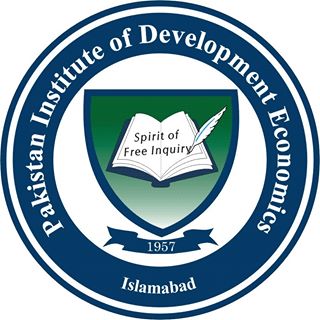PESHAWAR: Dr Nadeemul Haque, Vice Chancellor, and Dr. Durre Nayab, Pro Vice Chancellor of the Pakistan Institute of Development Economics (PIDE), shed light on the pressing issue of Pakistan’s widening trade deficit, emphasizing the critical role of export competitiveness in the country’s economic landscape.
According to a press release issued here on Sunday, Dr Nadeemul Haque began by acknowledging the paramount nature of the challenge at hand, stating, “Lowering exports has emerged as a significant contributor to Pakistan’s persistent trade deficit, posing a multifaceted challenge that has plagued the country since the early 2000s. During the last two decades, the contribution of exports to our GDP has declined from 16% to 10%.”
Drawing attention to the international context, Dr Durre Nayab highlighted, “Pakistan’s share in global trade has dwindled from 0.15% in 2005 to a mere 0.12% in 2021.
This decline in export competitiveness places us at a disadvantage, especially when compared to countries like Bangladesh, India, and Vietnam, which have managed to expand their export capacities.”
This finding was made by PIDE researchers and economists in their recent brief titled “What Are the Factors Making Pakistan’s Exports Stagnant? Insight from Literature Review.”
The academic duo underlined key factors that have led to stagnancy in Pakistan’s exports, including low productivity of firms, lack of value addition and innovation, complex incentive mechanisms, limited export destinations, and inadequate investment in research and development.
Dr. Nadeem ul Haque added, “To address the ongoing economic crisis and pave the way for a more resilient future, it is imperative that we strategize rigorously to identify potential markets that align with our exportable products.”
In a comprehensive literature review, it was revealed that Pakistan’s export competitiveness has been waning, particularly when compared to peer countries like Bangladesh, India, Vietnam, and Malaysia.
“We have witnessed a decline in our export share on the global stage, a trend that is most concerning when measured against our regional counterparts,” said Dr. Durre Nayab.
The contrasting trajectories of economies like Bangladesh and Vietnam were discussed in the context of export growth. “Bangladesh, once among the poorest nations, has managed to outpace growth predictions with a robust export-driven economy,” explained Dr. Nadeem ul Haque.
“In contrast, our exports have remained stagnant at around 30 billion dollars, posing a significant challenge to our economic outlook.”
Dr. Durre Nayab pointed to historical examples of countries like South Korea, which transformed from an agrarian economy to a tech-driven powerhouse. “Learning from these success stories, we understand that enhancing export competitiveness, improving productivity, and fostering innovation are central to breaking the cycle of stagnation.”
Dr. Nadeem ul Haque concluded, “To overcome the challenges posed by our current economic crisis, we must collaborate across sectors – government, exporters, and economists – to identify potential markets and align them with our export capabilities. A swift response is crucial in building a thriving economic environment.”
The scholars emphasized the need for a comprehensive firm-level survey to identify barriers to productivity and export competitiveness. By addressing these issues collectively, Pakistan can chart a course toward economic recovery and resilience.























